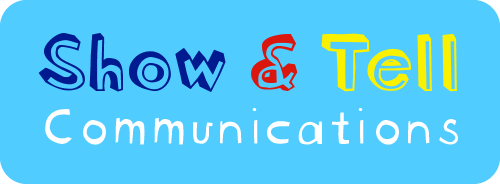Switching from Content Looking for a Purpose to a Purpose Looking for Content
Our problem was simple.
Nobody really understood what Show & Tell did. That was because we were doing so many things. We never planned it that way, it just happened over time as our clients needed more and different services from us. We kept adding to our skill set and, practically unnoticed, we grew into the creative equivalent of a Swiss army knife. And not one of the small ones, either. No. We became the one that’s as wide as a man’s forearm is long. The one with 87 tools. This one: The Wenger Giant.
It made for a very difficult and long elevator pitch. As a result, nobody really knew what we were for and how we could help them. New business dried up.
There was another problem as well.
When you’re a business that creates content, you’re often leaving it up to clients to figure out why they need that content. Clients need a reason to commission a video before they hire someone to make it. They need a purpose for their podcast before they pay for someone to produce it. You get the idea.
In essence, we were content creators looking for a purpose.
Lastly, problem No. 3.
When you’re a Jack of All Trades, competing with specialists is very hard. The Wenger Giant has a wood saw, if you can find it amidst the forest of blades, hooks, cutters and sharp things. But it doesn’t look much compared with a proper saw. It’s a make-do-in-a-pinch device, rather than a specialist tool. While we make videos for our existing clients all the time (and we’re good at it), outsiders struggle to see us as video makers.
Something needed to change. And that something was the story we told potential clients. So that’s what we did.
The key to a gripping story is clarity, something our old story lacked. We were content creators. But for whom and why? To put it another way, we couldn’t tell you what purpose we served. In theory, we served every purpose. That means, in reality, we served none.
So instead of being content creators in need of a purpose, we decided to start offering a purpose in need of content.
We decided to focus on producing email newsletters, something we were already doing for the majority of our retainer clients.
Now our elevator pitch is straightforward:
“We help you speak regularly with the people who love buying from you—so they keep on doing so.
“We do that by creating appetising email dispatches we think your audience will adore. The kind of dispatches people look forward to and willingly embrace. (Dispatches you can be proud of.)
“Would a regular email dispatch like that appeal to you?”
Why newsletters?
That’s a short question with a long answer. We’ll try to keep it brief:
We really enjoy creating newsletters.
Newsletters allow us to be multi-disciplinary content creators. We write words, take photographs, produce videos and record audio to go in them.
Our clients are able to have regular contact with people who are interested in what they sell.
Newsletters give our clients control of the list of people who want to hear from them.
Items 3 and 4 are especially important.
It seems clear now that social media platforms believe they own the audience you’ve built up. Although, to be clear, nobody really owns an audience. This isn’t the Middle Ages. You merely have permission from people to show them content. But there’s the problem. The social media platforms and their algorithms decide who sees your content, not you and not your followers.
If you want to increase the number of people who see your content, you can pay for it. Even then, in an obscure advertising ecosystem rife with fraud, good luck getting trustworthy audience figures in return for your advertising money.
On top of that, you don’t need to look too hard to find instances where even the most mainstream content creators have been shut down or squeezed by social media platforms for trivial reasons.
Social media just isn’t so social anymore.
Newsletters avoid all of this. You can curate, manage and grow the list of email addresses of people who want to hear from them (or ask us to do so). And when you send a message, you know with a high degree of certainty that everyone in the audience got it. Whether they open it is another matter. But at least they received it in the first place.
On top of this, you can keep an independent copy of your mailing list and transfer it from one newsletter broadcaster to another whenever you like. For their part, because they charge a fee, newsletter broadcasters are dedicated to getting your email dispatch to your subscribers. Unlike social media platforms, it doesn’t suit them if only a fraction of your audience got your message. Their business depends on everyone receiving it. Otherwise you will take your money and go somewhere else.
For all of these reasons, we’ve decided to dedicate ourselves to making the most appetising newsletters we can for you, so you have a direct and independent connection to your audience.
By the way, here’s a video of what we used to look like:

